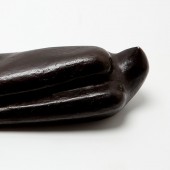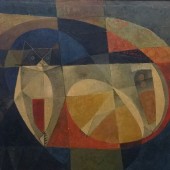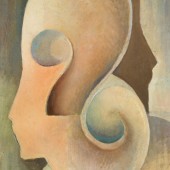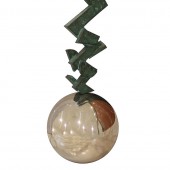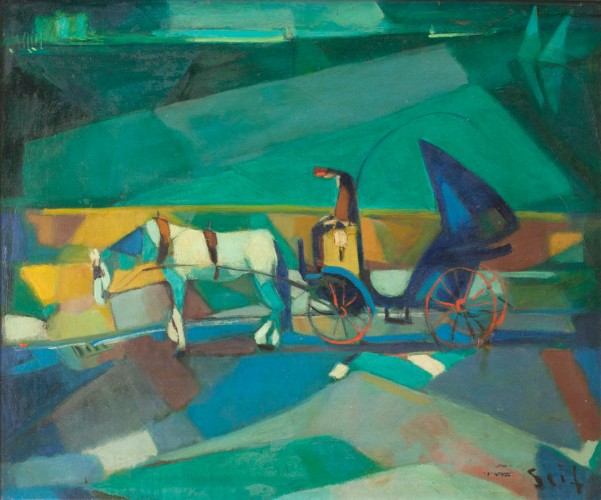
In Seif Wanly’s Nocturne, there is a whimsical reflection on the everyday; a driver has fallen asleep in his horse-drawn taxi cart is rendered in bright colours with geometric elements, the overall scene recalls a Fauvist style of painting. The vivid use of colour with varying blocks of greens and blues segments the tranquil scene through an emphasis on the translucent quality of light. Painted just after the Egyptian Revolution of 1952, this quiet scene of a driver without a customer signals the vulnerability of the aristocracy, to which Wanly belonged, under Egypt’s new leadership.
Growing up in Alexandria, Seif and his younger brother and artist Adham, hailed from an aristocratic family of Turkish origin and lived among a Francophone and international exile community of literary figures that included Lawrence Durrell, C.P. Cavafy, and various Italian and other European artists and writers. In the 1930s, Seif and Adham founded a studio in Alexandria. He frequently traveled to Europe attending and sketching ballets, operas and theatre scenes. By 1957 Wanly was appointed professor of art at the new Faculty of Fine Arts in Alexandria and was among a large group of artists sponsored by the Egyptian government to document the construction of the Aswan High Dam.
Throughout his travels and experience in Europe, and visits to Upper Egypt, Wanly represented an elite cosmopolitan and Alexandrian perspective. His paintings are included at the Seif and Adham Wanly Museum in the villa of the Mahmoud Saïd Museum in Alexandria and other regional art collections.
تقدم لوحة سيف وانلي بعنوان “موسيقى هادئة” انعكاساً غريباً للحياة اليومية، حيث تصوّر سائق عربة تجرها الأحصنة وقد غلبه النوم بألوان زاهية ممزوجة مع عناصر هندسية. ويستحضر المشهد الكلي للوحة أسلوب المدرسة الوحشية في الرسم. وتتميز اللوحة ببراعة الفنان في استخدام الألوان مع تفاوت بين تدرجات ألوان الأخضر والأزرق والتي تقسم المشهد الهادئ عبر التركيز على شفافية الإضاءة. وتشير هذه اللوحة التي رسمها وانلي بعد الثورة المصرية في عام 1952، والمشهد الهادئ للسائق النائم دون وجود أي زبون يود أن يقله، إلى تراجع الطبقة الأرستقراطية التي ينتمي إليها وانلي في ظل القيادة الجديدة لمصر.
نشأ وانلي وشقيقه الأصغر الفنان أدهم في مدينة الإسكندرية لعائلة أرستقراطية من أصول تركية. وقد عاش وسط مجتمع من الشخصيات الأدبية الفرانكفونية والمنفيين من حول العالم، أمثال لورانس دوريل، وقسطنطين كافافي، والعديد من الفنانين والكتاب الإيطاليين والأوروبيين. وفي ثلاثينيات القرن الماضي، أسس وانلي مع شقيقه أدهم استديو فني في الإسكندرية، وكثيراً ما سافر إلى أوروبا لحضور ورسم مشاهد رقص الباليه والأوبرا والمسرح. وبحلول عام 1957، تم تعيين وانلى أستاذاً للفنون في كلية الفنون الجميلة الجديدة بالإسكندرية، وكان بين مجموعة كبيرة من الفنانين الذين أرسلتهم الحكومة المصرية لتوثيق بناء السد العالي في أسوان.
خلال أسفاره إلى أوروبا، وزياراته إلى صعيد مصر، جسد وانلي المشهد النخبوي في العالم والإسكندرية. ويتم عرض لوحاته في متحف سيف وأدهم وانلي الموجود ضمن مجمع متاحف محمود سعيد بالإسكندرية، وضمن مجموعات فنية أخرى في المنطقة.




